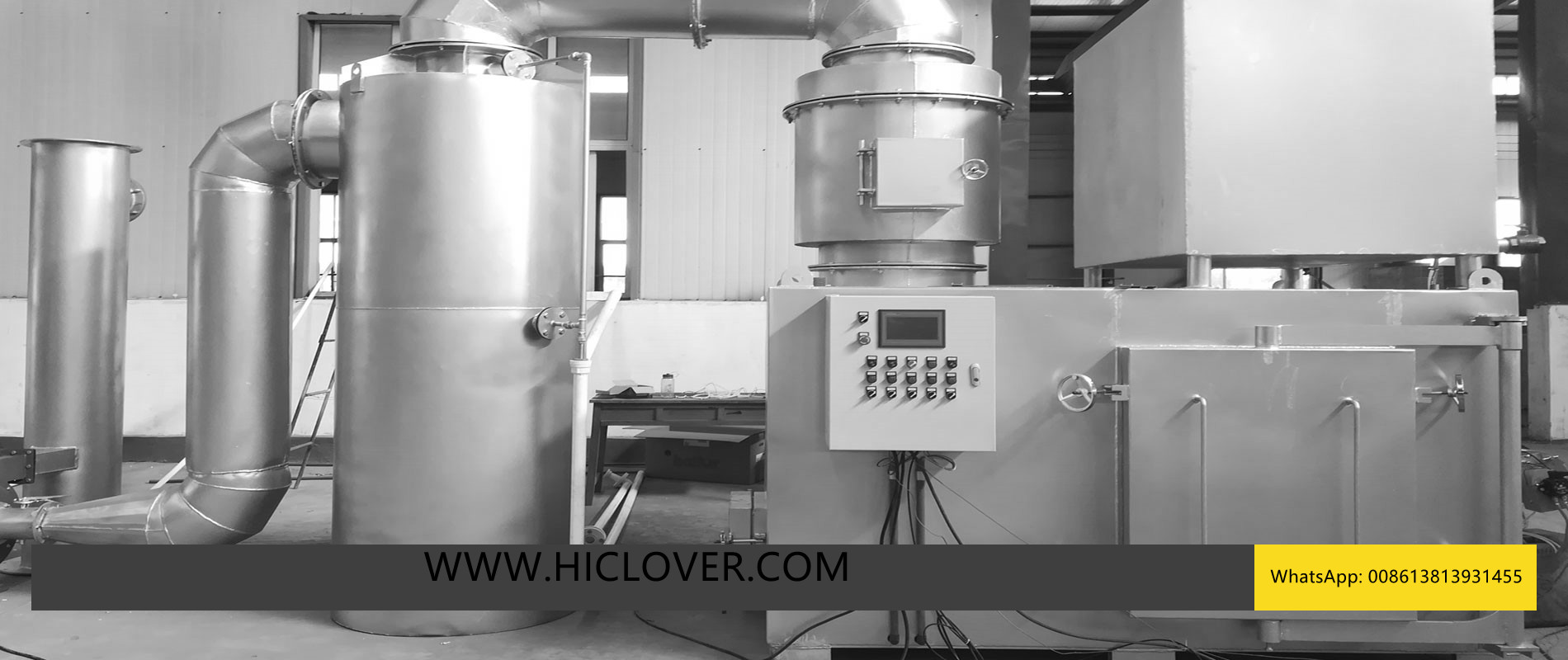Unlike open burning on the ground, burn boxes help to contain the burning waste within a particular location reducing the chance of fire spreading to other disposal areas or surrounding tundra, while still allowing moderate amounts of solid waste to be burned.
Burn Barrels
There are two basic types of burn barrels — the unmodified burn barrel and modified burn barrel.
Figure 3 — Open Metal Burn Box
Evenly spaced holes or vents cut above the bottom of the barrel supply combustion air. These features provide for increased passive under-fire ventilation and promote better contact between the waste being burned and incoming air. The basket fit is topped with a hinged lid and a chimney port for attachment of an exhaust pipe or stack. The lid will help to increase heat retention and holding time within the barrel while also allowing for easier loading and mixing of the waste.
Modified burn barrels can be built using commonly available materials. They can either be pre-built locally or transported to the site for assembly. Detailed construction plans are provided in Appendix 2.
Though modified burn barrels are intended to create an edge over open burning on the ground, burn boxes and unmodified burn barrels through achieving higher burn temperatures and increased turbulence and holding time, incomplete combustion of waste and the release of pollutants to the atmosphere are still likely. In fact, emissions testing by Environment Canada on a modified burn barrel in April 2011 imply that these devices do not offer any improvement over open burning on the ground concerning
Figure 4 — Altered Burn Barrel
emissions quality, especially if wet food waste is added to the waste mixture. Other common problems include readily overfilling the device and loading waste that should not be burned (refer to section 3.2). Wet or frozen masses of waste are especially tricky to burn and the consequent partly burned food waste may still bring in animals. The proper operation of altered burn barrels is vital to achieving the best burn possible. Basic operating instructions are provided in section 4.1.
Burn barrels are effective at burning only little volumes of solid waste. Like burn boxes, they decrease the chance of fire spreading to vegetation and tundra by comprising the burning waste to a certain location.
A modified burn barrel is a 45 gallon metal gas or petroleum drum that’s been affixed with devices or features which result in higher burn temperatures, better mixing of the atmosphere and a longer holding time. These modifications include a’metal mesh basket’ insert or grate designed to suspend the burning waste.
Harmful pollutants to the air, can cause vegetation or tundra fires throughout the uncontrolled release of hot sparks and embers, and is frustrated by the Nunavut Department of Environment as a way of disposing of unsegregated or mixed solid waste.
Burn Boxes
There are two basic types of burn boxes. The enclosed burnt box is constructed using heavy sheets of steel or other metal while the open burn box is constructed using expanded metal grating. The latter type is commonly known as a burn cage. These devices aren’t commercially-available in Nunavut, but may be constructed using locally available materials. By way of instance, the enclosed metal burn box shown in Figure 2 is produced from a dump truck bed and steel plating.
Photo courtesy of Alaska Department of Environmental Conservation
Burn boxes are regarded as a modification of open burning. Combustion air is supplied passively with a natural draft making power unnecessary. Burn boxes are only chambered units. Waste is raised off the bottom of the box by putting it on grates within the unit. Unburned bottom ash falls through the grate during burning making removal easier once a sufficient amount has collected. Combustion air in enclosed burnt boxes is typically provided by cutting holes near the base of the box allowing for better mixing with the burning waste.
Open burn boxes, or burn cages, are an improvement over enclosed burnt boxes because the waste is subjected to natural drafts through the metal grating on all surfaces including the bottom. This permits air to better blend with burning waste and promotes more efficient combustion during the burning period.
Means of reducing the
quantity of solid waste that has to ultimately be disposed of.
Both types of burn boxes are
The burning and incineration method used is a major element in determining which sort of waste can be safely and effectively disposed of. The methods commonly utilized in Nunavut include open burning on the ground, unmodified burn barrels and various mechanical incineration systems. Other useful methods include the use of burn boxes and altered burn barrels. Each technique is discussed individually in the following sections. This technique includes burning solid waste directly on the open ground or in burn boxes or burn barrels and often does not attain the temperatures or holding time needed for complete combustion of the waste to happen. This causes the formation of potentially hazardous pollutants and ash, which are likely to impact nearby water and land. Food waste that’s not completely burned through open burning may also be a potent attractant for animals.
The many open burning methods may also pose a risk of uncontrolled vegetation and tundra fires through the release of hot sparks or embers. The level of fire risk depends upon the sort of open burning used, its location, the skill of the operator and the environmental conditions that exist at the time (i.e. dryness of the surrounding vegetation, wind).
The open burning of solid waste remains a frequent practice in Nunavut. It’s the policy of the Department of Environment to remove or minimize open burning of mixed solid waste to the extent practicable and to encourage more suitable methods of disposal and incineration.
Open Burning on the Ground
Open burning on the ground involves burning solid waste that’s been piled right on the surface of the ground or placed in a tiny open pit. Many large and small communities and camp operators in Nunavut continue to practice open burning on the ground as a
Modified burn barrels can be built using commonly available materials. They can either be pre-built locally or transported to the site for assembly. Detailed construction plans are provided in Appendix 2.
Although modified burn barrels are designed to create an advantage over open burning on the ground, burn boxes and unmodified burn barrels through achieving higher burn temperatures and increased turbulence and holding time, incomplete combustion of waste and the release of pollutants to the atmosphere are still likely. In fact, emissions testing by Environment Canada on a modified burn barrel in April 2011 suggest that these devices do not provide any improvement over open burning on the ground in terms of
Figure 4 – Modified Burn Barrel
emissions quality, particularly if wet food waste is added to the waste mixture. Other common problems include easily overfilling the unit and loading waste that should not be burned (refer to section 3.2). Wet or frozen masses of waste are particularly difficult to burn and the resulting partly burned food waste may still attract animals. The proper operation of modified burn barrels is critical to achieving the most efficient burn possible. Basic operating instructions are provided in section 4.1.
Burn barrels are capable of burning only small volumes of solid waste. Like burn boxes, they reduce the risk of fire spreading to vegetation and tundra by containing the burning waste to a specific location.



